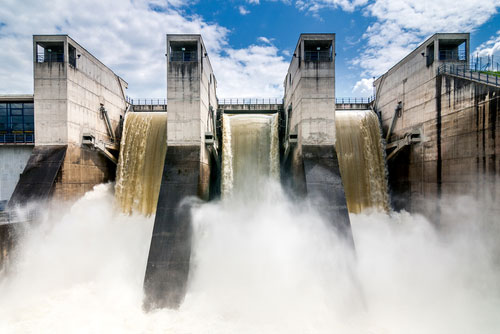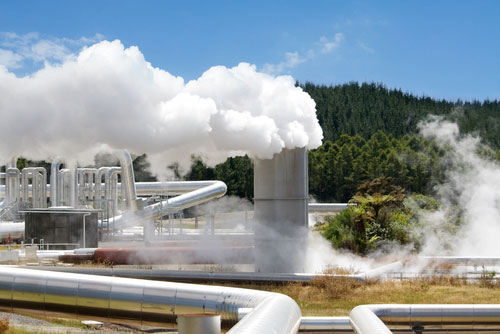1Which hours are rush hours in your community?
2 Why should we travel by public transport instead of private transport ?
Hãy nhập câu hỏi của bạn vào đây, nếu là tài khoản VIP, bạn sẽ được ưu tiên trả lời.

Renewable energies (or renewables) are ways to generate energy from (theoreally) unlimited natural resources. These resources are either available with no time limit or replenish more quickly than the rate at which they are consumed.
Renewable energies are generally spoken of as opposed to fossil fuel energies. The fossil fuels’ stocks are limited and non-renewable in the human timescale. The most known examples of these resources are coal, oil or natural gas. On the contrary, renewable energies are produced from renewable sources. Here, we’re talking about energy coming from solar rays, wind or water cycles – all theoreally unlimited on a human scale time.
Renewable energies are also often referred to as “green energies” or “clean energies”. Still, this doesn’t mean that these energies aren’t harmful to the environment and have zero impact. Nonetheless, they have a low environmental impact compared to fossil fuels. That’s why they’re increasingly becoming important elements in companies’ CSR strategies in terms of sustainable development.
There are several types of renewable energies that are produced by different sources such as the sun, wind or water. In fact, these renewables’ power consumption has been growing over the last year. They have provided 8% of the world’s electricity in 2017 and they now cover 1/3 of the power mix in Europe. At the same time, the energy grid gets 1/4 of the total energy in China and 1/6 in the United States, India, and Japan. Let’s learn more about them below.
1 – Solar Energy

This type of renewable energy comes directly from the capture of solar radiation. Here, the solar radiation is absorbed by specific sensors and rebroadcasted following 2 possible operation modes:
Examples of Solar Energy in the World
It’s estimated that in 2017 1,6% of the worldwide generated energy came from solar sources. At the same time, solar power also contributed to 20% of the total energy growth in this same year. Some of the most known sources of solar energy are:
Is Solar Energy Renewable or Nonrenewable?
Solar energy is inexhaustible in the sense that it will cease once the solar system’s star – the sun – dies. However, many people wonder if, from a perspective of human’s being able to capture and use solar energy in the long-term, whether solar energy is renewable or nonrenewable.
[Full answer available soon.]
2 – Windpower, a Renewable Energy
Wind power is another renewable energy. Here, the wind’s kine energy makes turbines spin and creates a mechanical movement. Afterward, a generator transforms this mechanical energy into electricity. There are several types of wind renewable energies: onshore wind turbines, off-shore wind turbines and even floating wind turbines. But the operating principles are basically the same for all these types of wind-generated energy.
Examples of Wind Power in the World
Wind power continues has also been growing, In fact, it provided 4.4% of global power generation in 2017. The highest installed wind capacity belongs to China (164GW). At the same time, in the EU, wind power provides 15% or more of the energy generated in several countries such as Germany, Portugal or Lithuania. Some of the most known sources of wind power energy are:
3 – Hydro-Electric Power

Hydro-electric power consists in the transformation of the kine energy of the water (from rivers, dams, marine currents or tides) into mechanical energy by turbines.
Examples of hydro-electric power in the world
4- Biomass

Biomass is made up of organic materials from plants or animals that contain stored energy. The combustion of these natural materials produces renewable energy. Some examples of generating energy from biomass are:
Related content:
Examples of Biomass Energy in the World
Some of the most known biomass power plants in the world are:
5- Geothermal Power as a Renewable Energy

The Earth generates and stores geothermal energy. In other words, radioactive materials decaying inside the Earth are emitting energy. Electricity can be created using directly or indirectly this energy, depending on the technology implemented. There are 3 main ways to use geothermal energy:

Đáp án C
Kiến thức về cụm từ cố định
City dwellers: cư dân thành phố
Tạm dịch: Chính quyền địa phương nên tìm cách giới hạn sự sử dụng ô tô cá nhân và khuyến khích cư dân thành phố sử dụng phương tiện công cộng.

each year, on September 22th people in over 1500 cities in 40 countries ảound the globe celebrate World Carfree day. This annual event, which is coordinated by the World Car Network in Parague and supported. by the European Union and the United Nations, aim to raise awareness of ....the..... problems caused by put dependence on private cars. Streets are closed to traffic and opened instead to street parties, theater, bicycles demonstrations or ourdoor cafe, in order to show people what your city might loook like ......if..... there were fewer or no cars. Over one hundred milion people are believe to take ......part..... in the celebration, though this figure is difficulty to verify.
The hope of the organizers is that the initiative will serve as a catalyst and lead to more permanent changes ......which...... will promote and encourage more environmentally friendly alternatives to the car, .....such....... as walking, cycling, and public transport. ...........However............, with increasing globe car production and a world which .....is...... grown used to the benefits of private transport, skeptics of the event say the battle is already lost. One can only hope they are wrong and even if it is unlikely we will see cities ........without........ any cars at all, people may at least begin to change their habits and leave their car at home more often

Đáp án B
Dựa vào đoạn văn, người dân ở Anh từ chối sử dụng các phương tiện giao thông công cộng vì __________.
A. Họ thích đi chung xe với hàng xóm
B. Họ nghĩ nó không đủ tốt
C. Họ không thấy có lí do gì để ít sử dụng xe ô tô của họ đi
D. Gía xăng tương đối rẻ ở Anh.
Dẫn chứng: « Most people say that public transport is simply not good enough.” (Hầu hết mọi người nói rằng nó đơn giản là không đủ tốt)

Đáp án C.
Keywords: major problems of road transport.
Clue: “The main problems associated with road transport in both Britain and the US are traffic congestion and pollution”: Những vấn đề chính liên quan đến vận tải đường bộ ở cả Anh lẫn Mỹ là tình trạng tắc nghẽn giao thông và ô nhiễm.
Đáp án là C. traffic jams and pollution.
MEMORIZE
- traffic (n) /'træfik/ + N
- accident: tai nạn giao thông
- fatality: chết tai nạn giao thông
- fume/ pollution: khí thải/ô nhiễm từ giao thông
- flow/ volume: lưu lượng giao thông
- law/ regulation: luật giao thông

1. Underline the mistake and correct it
1. Nam worked well , did -> didn't he ?
2. A lot of culture -> cultural and artistic activities are held as part of the flower Festival in Da Lat
3. In the future , we will use environment -> environmentally - friendly means of transport
4. Diseases spread very quickly in overcrowd -> overcrowded areas
5. You have hear -> hear about that , do not you ?
6. We should use public transport -> transportation when we travel long distances
7. Carbon footprint is the positive -> negative effects we have on the environment
8. He will not fall down , does -> will he ?
9. Coal , oil and natural gas are unlimited so we should -> might use alternative sources of energy in the future
10. He used to beat his wife , did -> didn't he ?

Fill each blank with the correct form of the word in the bracket:
1. This public.transportation..is very safe. TRANSPORT
2. We enjoy..travelling .by motorbike. TRAVEL
3. There is a.difference..between two pictures. DIFFER
4. Is M. Everest the..highest.mountain in the world? HIGH
5. There are a lot of.traditional..festivals in Vietnam. TRADITION
1. 7 a.m and 6.30 p.m
2. Because public transport is cheap. Besides, travelling by public transport is a good way to reduce air pollution and the use of petrol, so it can help us protect the environment.